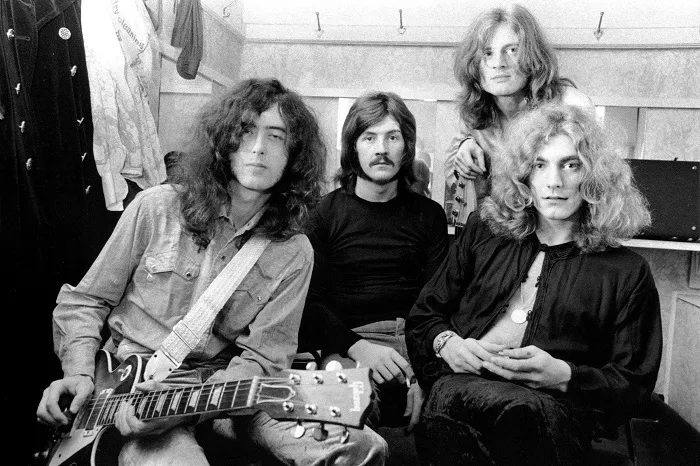Classical rock music is a genre that blends the power and energy of rock with the complexity and intricacy of classical music. This fusion has produced some of the most iconic and enduring songs in music history. Artists from the 1960s to the 1980s, such as Led Zeppelin, Pink Floyd, Yes, and Deep Purple, shaped this genre, taking rock to new heights with symphonic arrangements, extended instrumental sections, and thought-provoking lyrics. These tracks often bridge the gap between progressive rock, symphonic elements, and hard rock. In this article, we will explore some of the best classical rock Music Artists from the genre, highlighting the artists who helped shape it and the songs that have stood the test of time.
6 Influential Classical Rock Music Artists to Catch Up
1. “Stairway to Heaven” – Led Zeppelin (1971)
“Stairway to Heaven” by Led Zeppelin is one of the most famous songs in rock history and is often considered a pinnacle of classical rock. Released in 1971 as part of their Led Zeppelin IV album, the song starts with a gentle acoustic guitar melody before transitioning into powerful electric guitar riffs and orchestral flourishes. The lyrics are poetic and filled with symbolism, exploring themes of life, spirituality, and personal reflection. The song’s intricate arrangement, from the soft, delicate intro to the climactic guitar solo, captures the essence of classical rock. It remains a defining moment for the band and the genre itself.
2. “Bohemian Rhapsody” – Queen (1975)
“Bohemian Rhapsody” by Queen is another iconic song that defines classical rock. Released in 1975 on the A Night at the Opera album, the song is known for its operatic style and dramatic shifts between ballad, hard rock, and progressive rock. Freddie Mercury’s extraordinary vocal performance and the band’s harmonious layering of sound create a masterpiece that blends rock and classical elements seamlessly. The song’s elaborate structure, complex arrangements, and intricate use of harmonies make it a towering achievement in rock history. “Bohemian Rhapsody” is an anthem of the genre, with its memorable sections, including the famous operatic breakdown and hard rock finale.
3. “A Whiter Shade of Pale” – Procol Harum (1967)
Procol Harum’s “A Whiter Shade of Pale” is a stunning example of classical rock, featuring influences from Bach and other classical composers. Released in 1967, the song has a haunting organ-driven melody that complements its melancholy lyrics. The song’s structure is influenced by classical music, with its use of a Baroque-style organ, paired with the melancholy tone of the lyrics. The organ performance by Matthew Fisher is often praised for its classical complexity, and the song’s orchestral feel helped it stand out from other rock tracks of the era. “A Whiter Shade of Pale” remains one of the most important songs of the 1960s and is a perfect example of classical rock fusion.
4. “Kashmir” – Led Zeppelin (1975)
“Kashmir” from Led Zeppelin’s 1975 album Physical Graffiti is another great example of classical rock. The song is known for its complex time signatures, orchestral arrangement, and epic feel. With its driving rhythm, heavy guitar riff, and symphonic layers, “Kashmir” blends rock with elements of Eastern music and classical influence. The song’s lyrics, written by Robert Plant, evoke themes of travel, mysticism, and exploration. The instrumental arrangement, which incorporates strings and brass instruments, elevates the song beyond a typical rock anthem, showcasing the band’s ambition to combine classical music with hard rock. “Kashmir” is a signature track that exemplifies the genre.
5. “Conquistador” – Procol Harum (1967)
Another classic from Procol Harum, “Conquistador” was released in 1967 and features an orchestral arrangement that gives it a distinctly classical feel. The song’s powerful string section, combined with the band’s energetic rock performance, creates a unique fusion of classical and rock elements. “Conquistador” tells the story of a conquistador’s journey and his eventual downfall, offering both historical and emotional depth. The arrangement is sweeping, and the song’s complexity and dramatic build-up give it a timeless quality that makes it one of Procol Harum’s most beloved tracks.
6. “Child in Time” – Deep Purple (1970)
“Child in Time” by Deep Purple, from their 1970 album Deep Purple in Rock, is a heavy ballad that combines the power of hard rock with classical music influences. The song opens with a haunting organ intro before moving into a powerful guitar riff, with Ian Gillan’s soaring vocals adding emotional intensity. The band’s use of dynamics and intricate arrangements draws from classical music traditions, especially in the dramatic instrumental breaks and orchestral feel of the song’s build-up. The track has become a quintessential example of classical rock, blending hard rock with symphonic grandeur, and is one of Deep Purple’s most enduring songs.
See Also: 12 Catchy Rock Songs Associated With Allen Freed
Conclusion
Classical rock is a genre that thrives on complexity, depth, and innovation. The tracks highlighted in this article showcase the diverse ways in which rock artists have blended classical music with rock to create something timeless and powerful. From the symphonic sounds of Yes and Genesis to the operatic brilliance of Queen, these songs represent the best of what classical rock has to offer. Each track offers a unique blend of musical elements that continue to inspire musicians and listeners alike, ensuring that the legacy of classical rock endures for generations to come. These artists and their groundbreaking tracks are a testament to the enduring power of music that transcends genres, eras, and boundaries.
Related Topics
10 Influential Space Rock Artists to Catch Up

